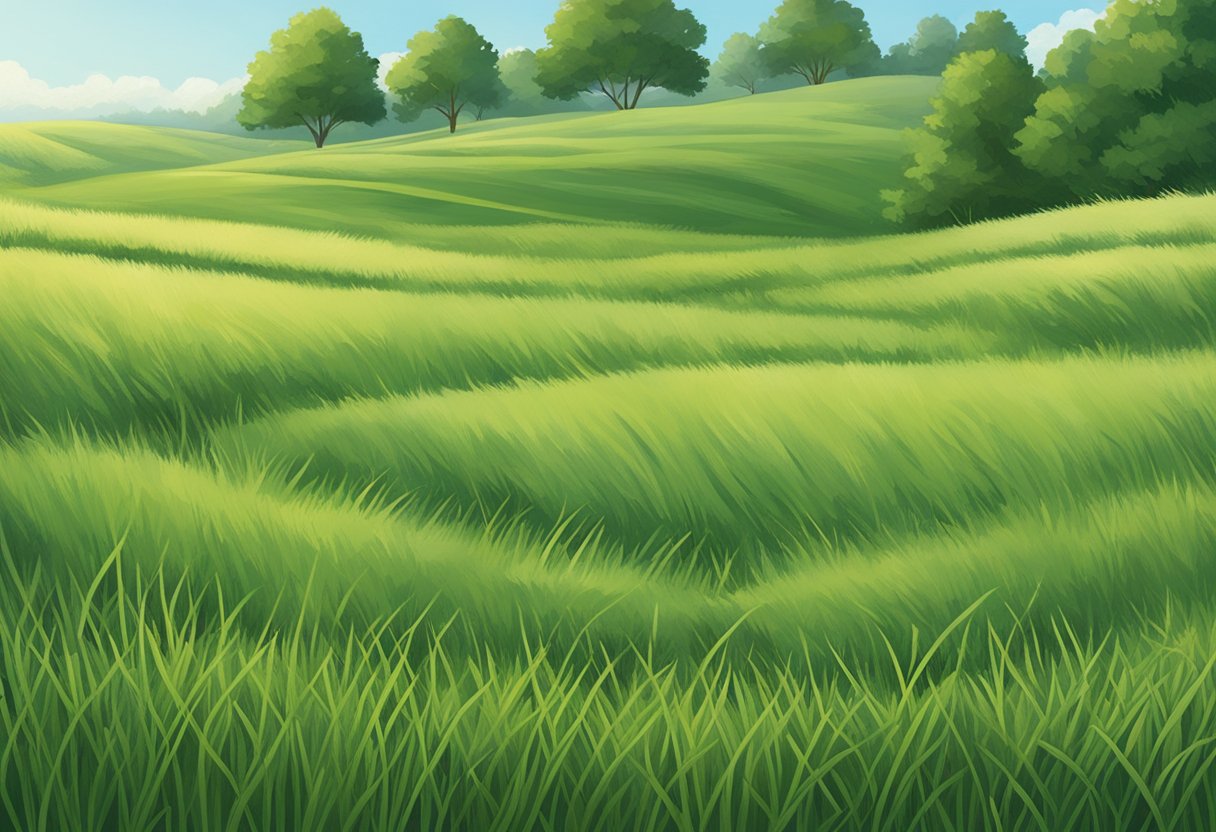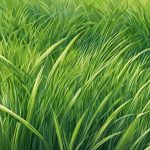Types Of Lawn Grasses
Lawn grass is an essential part of any yard, and choosing the right type of grass can make all the difference in creating a lush, healthy lawn. There are many different types of grass available, each with its own unique characteristics and growing requirements. Understanding the different types of grass and their ideal growing conditions is crucial to selecting the right grass for your lawn.
Cool-season grasses are popular in areas with cold winters and hot summers. These grasses grow best in temperatures ranging from 60 to 75 degrees Fahrenheit and include varieties such as Kentucky bluegrass, perennial ryegrass, and tall fescue. Warm-season grasses, on the other hand, thrive in hot temperatures and are ideal for areas with mild winters and hot summers. Zoysia grass, Bermuda grass, and St. Augustine grass are some of the most popular warm-season grasses.
When choosing grass for your lawn, it’s important to consider factors such as climate, soil type, and maintenance requirements. Some grasses may require more frequent watering or fertilization than others, while some may be more tolerant of shade or foot traffic. By understanding the different types of grass and their growing requirements, you can choose the best grass for your lawn and enjoy a beautiful, healthy lawn all year round.
Key Takeaways
- Understanding the different types of grass and their ideal growing conditions is crucial to selecting the right grass for your lawn.
- Cool-season grasses are popular in areas with cold winters and hot summers, while warm-season grasses thrive in hot temperatures and are ideal for areas with mild winters and hot summers.
- When choosing grass for your lawn, it’s important to consider factors such as climate, soil type, and maintenance requirements.
Understanding Grass Types

When it comes to lawn grasses, it’s important to understand the different types available to choose the best option for your lawn. This section will provide an overview of cool-season vs warm-season grasses, growth habits of grasses, and the varieties of grass seed and sod available.
Cool-Season vs Warm-Season Grasses
Cool-season grasses are those that thrive in cooler temperatures, typically found in the Northern regions of the United States. The most common cool-season grasses include Kentucky Bluegrass, Fine Fescue, and Perennial Ryegrass. These grasses grow best in temperatures between 60-75 degrees Fahrenheit and can tolerate light shade.
On the other hand, warm-season grasses are those that thrive in warmer temperatures, typically found in the Southern regions of the United States. The most common warm-season grasses include Bermuda Grass, Zoysia Grass, and St. Augustine Grass. These grasses grow best in temperatures between 80-95 degrees Fahrenheit and can tolerate full sun.
Growth Habits: Rhizomes and Stolons
Grass growth habits refer to the way the grass spreads and grows. Rhizomes are underground stems that grow horizontally and produce new shoots and roots. Rhizomatous grasses include Kentucky Bluegrass and Tall Fescue. Stolons are above-ground stems that grow horizontally and produce new shoots and roots. Stoloniferous grasses include Bermuda Grass and Zoysia Grass.
Grass Seed and Sod Varieties
When choosing grass seed or sod, it’s important to consider factors such as climate, soil type, and intended use. For example, Kentucky Bluegrass is a popular choice for lawns in cooler climates, while Bermuda Grass is a popular choice for lawns in warmer climates. Fine Fescue is a good option for shaded areas, while St. Augustine Grass is a good option for areas with heavy foot traffic.
In addition to considering the type of grass, it’s important to choose high-quality seed or sod to ensure optimal growth. Some popular grass seed and sod varieties include Scotts Turf Builder Grass Seed, Pennington Smart Seed, and Harmony Sod.
Understanding the different types of grasses and their growth habits is crucial for choosing the best option for your lawn. By considering factors such as climate, soil type, and intended use, you can ensure a healthy and beautiful lawn.
Popular Cool-Season Grasses
When it comes to cool-season grasses, there are a few varieties that are particularly popular. These grasses are often used in the Northeast and Pacific Northwest regions of the United States, where the climate is cooler and wetter. Here are some of the most common cool-season grasses:
Kentucky Bluegrass Characteristics
Kentucky bluegrass is a popular choice for lawns in cooler climates. It is known for its fine texture, dark green color, and ability to spread and fill in bare spots. Kentucky bluegrass is often used in full sun areas and is commonly found in seed mixes with other cool-season grasses.
Fine Fescue Varieties
Fine fescue is a type of fescue grass that is known for its fine texture and shade tolerance. There are several varieties of fine fescue, including creeping red fescue, chewings fescue, and hard fescue. These grasses are often used in the Pacific Northwest and other cooler regions where shade is common.
Perennial Ryegrass Benefits
Perennial ryegrass is a popular choice for overseeding lawns in the fall. It is known for its quick germination and ability to establish quickly. Perennial ryegrass is often used in seed mixes with Kentucky bluegrass and other cool-season grasses. It is commonly found in full sun areas and is known for its bright green color.
Overall, these cool-season grasses are popular choices for lawns in cooler regions of the United States. Whether you are looking for a fine-textured grass for shade or a quick-establishing grass for full sun, there is a cool-season grass that will meet your needs.
Popular Warm-Season Grasses
When it comes to warm-season grasses, Bermuda grass, Zoysia grass, and St. Augustine grass are some of the most popular options. Each of these grasses has unique characteristics that make them well-suited for specific environments and maintenance requirements.
Bermuda Grass Adaptations
Bermuda grass is a warm-season grass that is well-adapted to the hot and humid conditions of the Southeast and Gulf Coast regions of the United States. It is known for its excellent heat tolerance and drought resistance, making it a popular choice for homeowners who want a low-maintenance lawn.
One of the key benefits of Bermuda grass is its ability to grow quickly and spread rapidly, which can help it recover from damage and fill in bare spots. However, this also means that it can become invasive and difficult to control if it is not properly managed.
Zoysia Grass Maintenance
Zoysia grass is another warm-season grass that is well-suited to the Southeast and Gulf Coast regions. It is known for its dense, lush growth and excellent heat and drought tolerance. Zoysia grass is also relatively low-maintenance, requiring less frequent mowing and fertilization than some other grasses.
One of the challenges of maintaining Zoysia grass is its slower growth rate, which can make it more difficult to establish and repair. However, with proper care and maintenance, Zoysia grass can provide a beautiful and durable lawn for many years.
St. Augustine Grass Preferences
St. Augustine grass is a warm-season grass that is well-suited to the humid and subtropical regions of the Southeast and Gulf Coast. It is known for its lush, green growth and excellent shade tolerance, making it a popular choice for homeowners with shaded lawns.
One of the challenges of maintaining St. Augustine grass is its susceptibility to pests and diseases, particularly in areas with high humidity and rainfall. However, with proper care and maintenance, St. Augustine grass can provide a beautiful and durable lawn that is well-suited to the unique conditions of the Southeast and Gulf Coast.
Choosing Grass for Your Climate
When it comes to choosing the right type of grass for your lawn, the climate of your region plays a crucial role. Different grasses thrive in different climates, and selecting the right one can mean the difference between a lush, green lawn and a patchy, brown one.
Best Grasses for the Northeast
The Northeast region of the United States has a humid climate with cold winters and mild summers. For this reason, cool-season grasses such as Kentucky bluegrass, perennial ryegrass, and fine fescue are the best options. These grasses can withstand cold temperatures and grow well in the region’s acidic soils.
Grasses for the Southeast and Gulf Coast
The Southeast and Gulf Coast regions have hot, humid summers and mild winters. Warm-season grasses such as Bermuda grass, Zoysia grass, and St. Augustine grass are the best options for these areas. These grasses are heat-tolerant and can withstand the humid climate of the region.
Adapting Grass Types to the Southwest
The Southwest region has a hot and arid climate with low humidity and alkaline soils. Warm-season grasses such as Bermuda grass, Zoysia grass, and buffalo grass are well-suited for this region. However, these grasses may require more water than usual to thrive in the arid climate.
In the transition zone, which includes parts of the Midwest and mid-Atlantic states, it can be challenging to choose the right grass type. This area experiences a mix of hot and cold temperatures, making it hard for both warm and cool-season grasses to thrive. In such cases, it’s best to consider a blend of both warm and cool-season grasses to ensure a healthy lawn.
When selecting grass for your lawn, it’s also essential to consider the soil type of your region. Different grasses grow better in different soil types, and selecting the right one can help ensure a healthy lawn. Overall, selecting the right grass type for your region can help you achieve a lush, green lawn that you can be proud of.
Lawn Care and Maintenance
Watering and Fertilizing Requirements
The watering and fertilizing requirements for different grass types can vary greatly. It is important to understand the specific requirements of your grass type to ensure that it remains healthy and vibrant. Generally, most grass types require around 1 inch of water per week. However, some grasses such as Bermuda grass can tolerate drought conditions and require less watering. On the other hand, grasses such as Kentucky bluegrass require more water and may need to be watered more frequently. Fertilization should be done during the active growing season and should be tailored to the specific needs of your grass type.
Disease Management and Weed Control
Disease management and weed control are important aspects of lawn care. Common lawn diseases include brown patch, dollar spot, and rust. These diseases can be prevented by proper watering and fertilization practices, as well as regular lawn maintenance. Weed control is also important to maintain a healthy lawn. Crabgrass and dichondra are common weeds that can take over a lawn if not properly controlled. Pre-emergent herbicides can be used to prevent weed growth, while post-emergent herbicides can be used to control existing weeds.
Mowing Techniques for Different Grass Types
Mowing techniques can vary depending on the grass type. Generally, it is recommended to mow grass to a height of 2-3 inches. However, some grasses such as St. Augustine grass should be mowed to a height of 3-4 inches. It is also important to use sharp mower blades to prevent damage to the grass. Additionally, it is recommended to mow the grass in a different direction each time to prevent matting and promote healthy growth.
In summary, proper lawn care and maintenance is essential for a healthy and vibrant lawn. Understanding the specific watering and fertilizing requirements, disease management and weed control, and mowing techniques for your grass type can help ensure a beautiful lawn.






